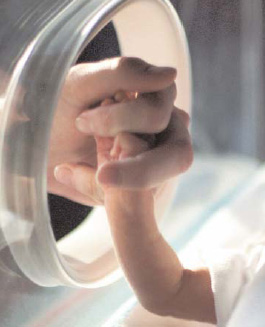During my zookeeping and environmental education career, I have interacted and worked with a variety of animals, including brown bears, wolverines, red foxes, moose, camels, mountain goats, dolphins, sea lions, raccoons, porcupines, snakes, raptors and ravens. I am also a young adult author, and my debut novel ESSENCE was released in June 2014 by Strange Chemistry Books. Ask me anything!
Hi Padres! Animal exchanges are done for a variety of reasons, including reproduction and genetic diversity. In the case of giant pandas, zoos often acquire them to inspire guests to care about issues like wildlife conservation. (They obviously appreciate the increase in zoo attendance as well. ;)) Nowadays, there are probably less than 1,000 pandas remaining in the wild. Only 110 or so live in zoos, and just 16 of these are housed outside China. The Chinese government regulates the export of pandas to zoos in other countries, and these exchanges can be incredibly complicated. The crux of the exchange is monetary, of course, but many other factors may be at play. Sometimes, the zoos exchange other animals during the trade as well, and often the money must be used in a particular way--i.e., to support panda habitat restoration or research. Pandas can only be loaned for a certain amount of time, and very high standards of care must be met to ensure the panda is put into a thriving, dynamic environment. Hope this is helpful!
I have been fortunate enough to have never dealt with a large-scale animal escape. However, a few years before I started working at one particular facility, a bunch of kids broke in and cut the locks off a number of animal enclosures. The result was chaos, as you can imagine, but thankfully zoos have protocols for dealing with just such a situation. Animals are basically categorized according to their threat level. Large carnivores and some other animals (like an elephant or a moose in rut) are considered the highest priority, of course. An emergency plan is developed the moment the zoo acquires this animal, and staff members are briefed on what to do should an emergency arise. (Evacuate the zoo, for instance, and then grab tranquilizer guns and attempt to corral the animal back where it belongs.) Training is also done to teach the animals how to react in unfamiliar situations, because the animals are often more frightened than the humans. Many animals know their crates are safe places, so zoo staff members often use positive reinforcement to entice them back into their crates. Finally, everyone attempts to keep his or her cool, because animals can often sense our stress. In reality, we are half-terrified, but just like a first responder is trained to react to an emergency, we are, too. Our calm and focus is critical at a time like that.
I love this question, and thanks for the link, Cory. I actually hadn't seen that video before, and it is fabulous. Complicated behaviors like the ones shown in this clip often take months--if not years--to perfect. What you are seeing is the result of many, many hours of hard work and dedication, both on the part of the trainer and on the part of the walrus. In order for a trainer to teach an animal something that complicated, the behavior must be broken down into many tiny steps. In the case of the tango, the steps would be something like 1) right flipper forward, 2) left flipper forward, 3) right flipper forward again, 4) left flipper forward again, 5) right flipper back, 6) left flipper back, 7) bow to the crowd, etc. When the trainer first begins training, he approaches each behavior individually. For example, if he wants to train "right flipper forward," he will reward the walrus with positive reinforcement (treats, rubs, etc.) every time he successfully moves his right flipper forward. This is done much like the "hot/cold" game we played as kids. The moment the walrus moves his flipper forward--even if it's on accident--the trainer will blow a whistle to signal success and then will quickly give the walrus his reward. Eventually, the walrus will make the connection, and he will happily move his flipper forward whenever directed--usually through a verbal command or a hand signal. Once the walrus has this behavior mastered, the trainer will move on to the next command: "left flipper forward." Eventually, the trainer will string these two behaviors together, and the walrus will realize he only gets his reward when he completes both behaviors in sequence. The trainer will teach this over and over and over until the walrus can perform this entire sequence on command. Once this is perfected, the walrus and his trainer can perform the illusion of a spontaneous musical number to the beat of a song, even though the walrus isn't actually paying attention to the song at all. He is watching his trainer, and he is waiting for the subtle commands that will undoubtedly lead to his reward at the end of the number. (Notice the attention and that juicy fish he got right before they walked off-stage!)
Oh my gosh, isn't that story the sweetest thing you have ever seen?? While I have never experienced anything nearly that dramatic, I did have a great moment a few years back when I returned to a marine park in Florida. While I worked there, I really bonded with four rough-toothed dolphins. Two were very young and didn't remember me at all two years later, but the third seemed to show a flicker of recognition when she saw me. The fourth (my VERY favorite) immediately rushed over and put his chin in my lap. I was so overwhelmed and moved and thankful that I literally cried on the spot. (By the way, leaving facilities has been the HARDEST thing I ever have to do in this line of work. Although the direction of your life changes and you know moving is what you need to do, you still feel like your guts get ripped out every time you have to say goodbye. I tear up just thinking about it.)
MBA Student
 How many years of work experience do you REALLY need before applying?
How many years of work experience do you REALLY need before applying?
Nurse Practitioner
 As gender roles continue to evolve, are you seeing a rise in the % of male nurses?
As gender roles continue to evolve, are you seeing a rise in the % of male nurses?
School Bus Driver
 If your bus is in an accident that was ruled your fault, would you lose your job?
If your bus is in an accident that was ruled your fault, would you lose your job?
Absolutely! My general saying is that any animal with a mouth is capable of biting. ;) Many visitors believe a zoo's only dangerous animals are the carnivores, but many of the world's most unpredictable and powerful animals are actually herbivores. Even the cute and cuddly creatures are capable of packing a pretty powerful punch. That's why it's important for animal care professionals to never let our guards down. No matter how long we have been working with a particular animal, we must always remember it is a wild animal, not a pet. As a specific example, I used to work in a facility that displayed arctic foxes. They were the cutest things in the world--fluffy and white, with button eyes and little black noses--but their cuteness transformed the moment anyone got too close. If given the opportunity, they would have probably chewed my fingers off. :)
Goats! My friends laugh at my love for them, but what's not to like? They're cute, they're relatively docile and they mow your lawn for you! Pigs also make great pets, but they grow bigger than you'd think, so it's important to make sure you have lots of space for them.
In general, I actually recommend NOT owning exotic pets, because there are lots of behind-the-scenes issues with the pet trade. While some exotic animals are raised for this purpose, many more are stolen from their native habitat and smuggled overseas for sale. Infants are often separated from their mothers, and many die during transit.
Wild animals are also much more unpredictable (and sometimes dangerous) than their domestic counterparts, so owners often struggle to take care of them. They usually don't get the nutrition they need, and their "newness" wears off quickly.
Many times, owners eventually decide to "set them free," and this almost always has fatal consequences for the animal. When it doesn't, it disrupts the natural balance of the native ecosystem. (A great example of this is the massive reticulated pythons that are currently running amok in the Everglades--even though they are native to Southeast Asia.)
That being said, I definitely think farm animals should get more props for being awesome. If you happen to own a nice piece of land and can afford to support them, I would highly recommend them!
Thanks for the great question, JoHu. (My story is definitely a bit different than most!) In some sense, I think I have always known my heart is in zoos and aquariums. I volunteered at a zoo all through high school, but I allowed myself to be talked out of this career for awhile once I reached college. Some well-meaning teacher or guidance counselor told me I needed to choose a more lucrative career, so I concentrated on the business side of things and graduated with a degree in Theme Park & Attraction Management. (Weird, right? I went to school in Orlando, so it kinda makes sense...) After working in operations management for awhile, I made the decision to return to my roots. I spent a season volunteering for a marine mammal rescue facility in California; I also went back and picked up a lot of science knowledge I lacked. This led to me an environmental education job at a marine mammal display facility in Florida, which led me to my first zookeeping job in Alaska. My career continues to evolve, but one thing is for sure. I don't regret a single minute of my experiences--even though my paycheck isn't nearly as fat as it would have been if I'd listened to that guidance counselor. ;)
-OR-
 Login with Facebook
Login with Facebook (max 20 characters - letters, numbers, and underscores only. Note that your username is private, and you have the option to choose an alias when asking questions or hosting a Q&A.)
(A valid e-mail address is required. Your e-mail will not be shared with anyone.)
(min 5 characters)
By checking this box, you acknowledge that you have read and agree to Jobstr.com’s Terms and Privacy Policy.
-OR-
 Register with Facebook
Register with Facebook(Don't worry: you'll be able to choose an alias when asking questions or hosting a Q&A.)